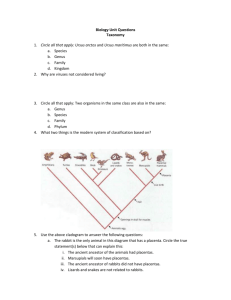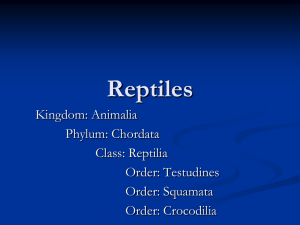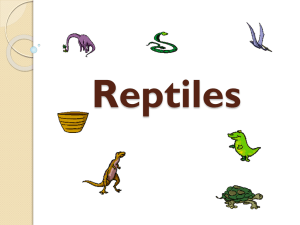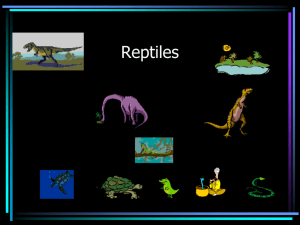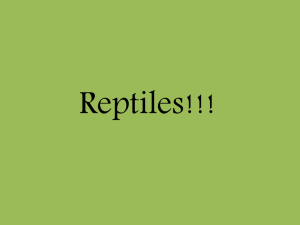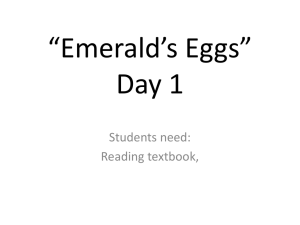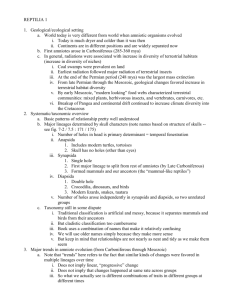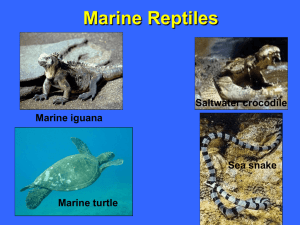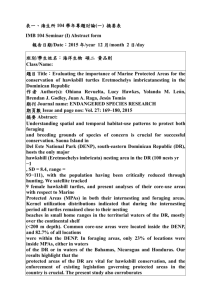Class+Reptilia
advertisement
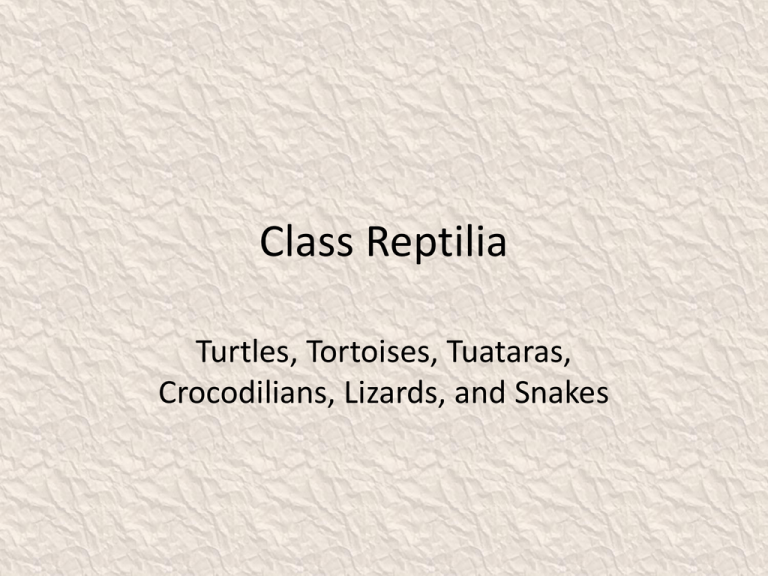
Class Reptilia Turtles, Tortoises, Tuataras, Crocodilians, Lizards, and Snakes Classification • Domain Eukarya • Kingdom Animalia • Phylum Chordata – Subphylum Vertebrata • Class Reptilia – – – – Order Chelonia Order Crocodilia Order Squamata Order Rhynchocephalia Order Chelonia • Turtles and Tortoises – Earliest fossils dated to 200 m.y.a – Shell consists of fused boney plates • Carapace (Dorsal, top) • Plastron (Ventral, lower) – 250 species worldwide – Variety of habitats • Most species ribs and spine fused to inner surface of carapace • Pelvic and Pectoral girdles lie within the ribs • Sharp beak instead of teeth • Shell and limbs reflect habitat Turtles • • • • Marine or freshwater Stream – lined shells Webbing between toes Terrapin refers to small aquatic or semi – aquatic other than sea turtles Tortoises • • • • Heavy domed shell Retract limbs and head Limbs sturdy with scales Clubbed walking feet Order Crocodilia • Crocodiles, Alligators, Caimans, Gavial Order Crocodilia • Most closely related to dinosaurs • Heavy bodied, mostly aquatic • Carnivorous Order Squamata • Lizards and Snakes – Upper jaw is loosely joined to the skull – Jacobson’s organ Lizards • Only 2 species venomous – Gila Monster – Bearded Lizard • Autotomy Snakes • Backbone of 100 – 400 vertebrates – Pair of ribs attached to each vertebra • Seize and swallow prey • Constrictors • Venom – Fangs back of mouth – Elapid, inject poison through fixed fangs in front – Vipers, inject venom using large mobile fangs Order Rhynchocephalia • Ancient order inhabit few small islands of New Zealand • 24 inches in length • Spiny crest that runs down the animal’s back • Tolerate cool temp, burrow during day and hunt at night
